| Designation: | Buffel |
 |
|---|---|---|
| Manufacturer: | Reumech OMC | |
| Product type: | Auxiliary Vehicles | |
| Name: | Mine protected carrier |
The Buffel 4×4 vehicle was developed in the 1970s under the leadership of ARMSCOR (Armaments Corporation of South Africa) to meet the operational requirements for a mine protected Armoured Personnel Carrier (APC) for the South African Army, mainly infantry units. It is estimated that around 2,400 were built for the home and export markets before production was completed. These are still used in declining numbers by the South African Army.
According to the United Nations Transfer lists, there was only one sale of surplus Buffel APC by South Africa between 1992 and 2005. This was to Uganda who took delivery of 31 units in 2004.
The Mercedes-Benz diesel engine is located at the front of the vehicle with the driver seated above on the left side in a fully armour protected cab, that is provided with bulletproof windows to the front and sides. A spare wheel and tyre is normally carried on the right side of the engine compartment. The top of the driver's compartment is open as this is where he enters and leaves the vehicle.
The Buffel uses a German Mercedes-Benz UNIMOG Model 416/162 series 4 × 4 chassis that was originally developed for a wide range of civil and military roles. It should be noted that production of this chassis was completed many years ago.
The all-welded steel armour hull has a V-shape to provide maximum possible protection against anti-tank mines. According to ARMSCOR the Buffel provides the occupants with protection for the following anti-tank mines:
- Single Russian TM-57 anti-tank mine or equivalent detonated anywhere under the vehicle
- Double Russian TM-57 anti-tank mine or equivalent detonated under any wheel station.
When a mine explodes under a vehicle, the pressure wave and the flying steel do most of the damage according to ARMSCOR. This is why the Buffel was designed with a robust wedge shaped body that deflects the pressure wave and reduces the amount of energy transferred from the explosion to the vehicle.
The effect of an explosion is also reduced in accordance with the distance or height of the target from the point of detonation.
The rear troop compartment has an open top with the 10 infantrymen seated five down either side back to back facing outwards. Each seat is provided with a full seat belt harness and the seats have been specially designed to absorb as much as possible of the shock in the event of a mine detonation.
The only means of entry and exit is by climbing over the sides of the hull, which is provided with steps. The hull sides are hinged at the lower part and can be open outwards to load equipment and supplies. A strong longitudinal roll bar above the seats protects the occupants should the vehicle roll over.
Two 5.56 mm or 7.62 mm machine guns can be pintle mounted on top of the hull and these are normally positioned front right and left rear of the hull. Some vehicles have also been observed with twin 5.56 mm or 7.62 mm machine guns at each station, with the gunner being provided with a shield to provide some frontal protection from small arms fire.
Standard equipment on the Buffel includes a 24 V, 7-pin trailer connection at the rear and a large fully enclosed stowage box mounted externally at the rear of the hull. A drinking water tank is also provided which is considered essential in the harsh environment in which the vehicle was designed to operate.
The first production version of the Buffel was designated the Mk I and two versions of the Mk II were fielded, the Mk IIA with drum brakes and the Mk IIB with disc brakes.
The Mk II was essentially a rebuild of the original Mk I and was carried out by Number 61 Base Workshop of the South African National Defence Force.
The vehicle has been fitted with a new fully enclosed rear troop compartment with a large access door at the rear below which is a series of steps. To the front, sides and rear are bulletproof windows and each of these is provided with a bulletproof circular firing port.
Unlike the original Buffel, the Mk II is provided with overhead protection for the troop compartment in which are located roof hatches that can be locked in the vertical position.
The driver's compartment has been redesigned and has improved vision. Also provided is a two-part roof hatch that opens left and right. Fully enclosed external stowage bins are provided.
Specialised variants include an 81 mm mortar carrier and the Mk 1 tractor. The latter has a fully armoured cab at the front and is fitted with a cargo area at the rear with a drop tailgate. This can carry a maximum payload of 2,500 kg. In the past this has also been used to tow weapons such as a 20 mm light anti-aircraft gun.
The South African National Defence Force has a number of Buffels that are surplus to requirements, these are now been offered on the export market.
During the International Countermine Conference held in Copenhagen, Denmark in 1995, a request was made to conference delegates to make a low-cost Mine Protected Vehicle (MPV) available. ARMSCOR responded to this request and offered the combat proven Buffel (4 × 4) MPV.
Before delivery the Buffels would be stripped down and completely rebuilt so that they are virtually a new vehicle. The vehicles would come complete with a 12 month or 20,000 km guarantee. A driver and maintenance training package could also be provided as could a comprehensive spare parts package.
|
||||||||||||||||||||||||||||||||
|
|||||||||
|
||||||||||||||||||||||||
Related Articles |
|
The Dutch armed forces select Rheinmetall to modernize their Bergepanzer 3 Büffel (17.05.2019) |
|
Rheinmetall wins important Bundeswehr force protection orders (15.04.2011) |
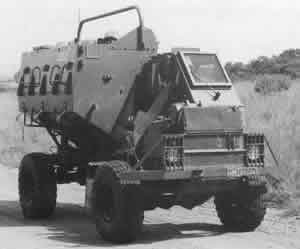 |
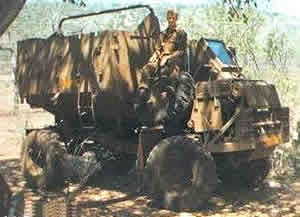 |
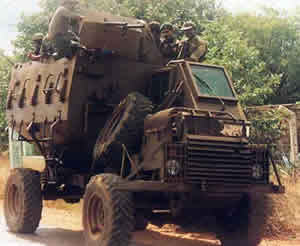 |
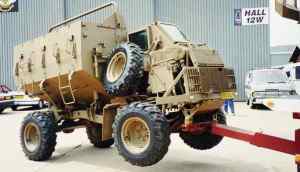 |
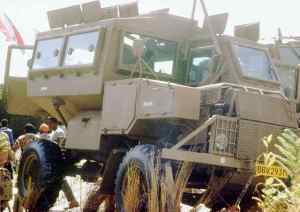 |




